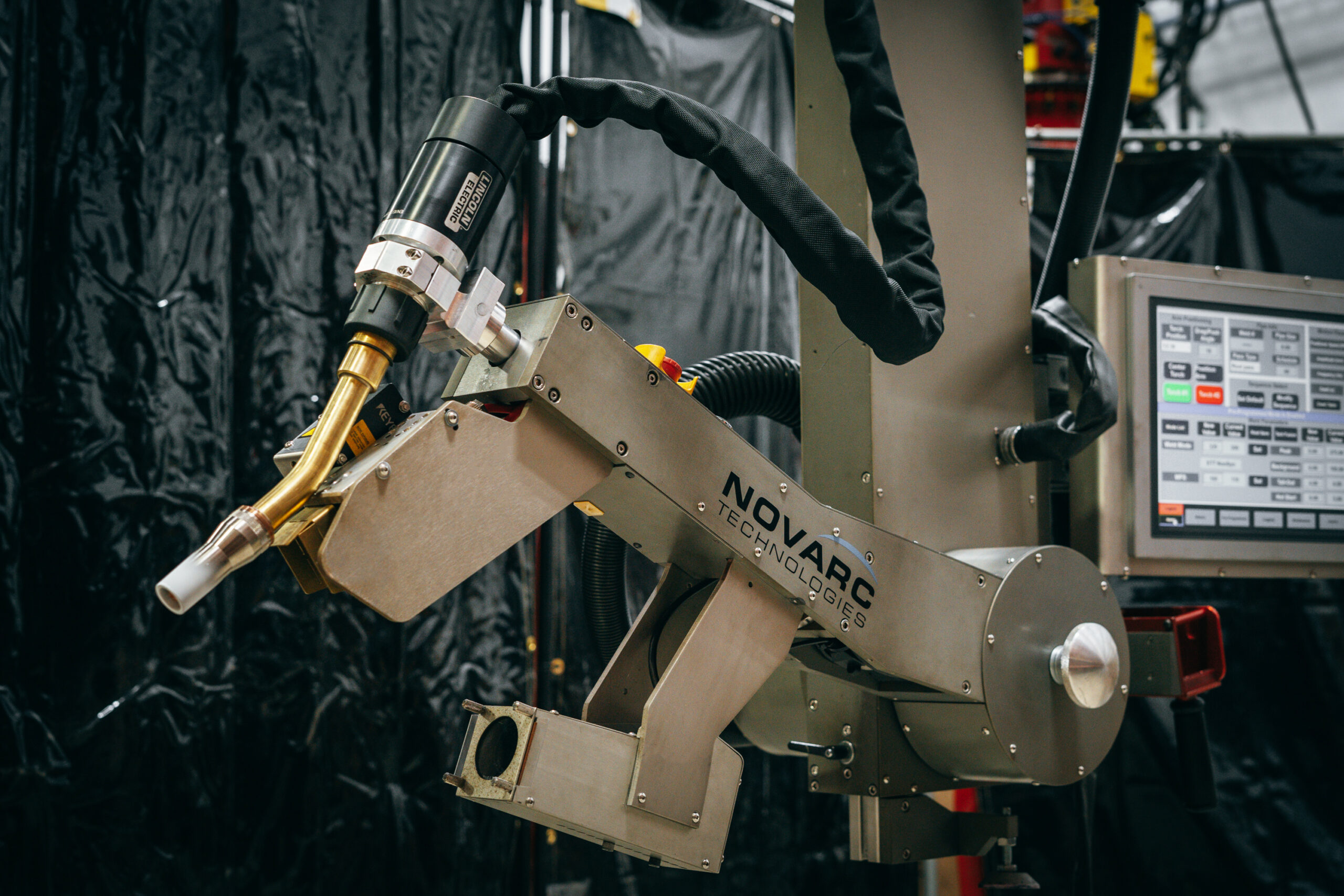Before getting into the ROI of a collaborative robot (cobot), let’s discuss the benefits of a welding cobot.
A cobot (collaborative robot) does not work against you, unlike some common understandings. What this means is there is a connection between the machine and a human in order to do things faster. It does not take jobs away, and they can collaborate to achieve goals—. There are health benefits as well. For example in the case of welding cobots, such as the Spool Welding Robot (SWR), it minimizes the welders’ exposure to UV light, carcinogenic fumes and heat.
With purchasing any hardware, it is mandatory to talk about ROI: How long is it going to take to pay off? What will help make a business determine the best investments for them?
At Novarc, we receive the information from our customers to do these calculations, so that we can give them clear answers. We take this data to determine how much pipe they are welding, how long it takes, and so on, and then provide the information back to them. If the SWR (Spool Welding Robot) will pay for itself in say, 18 months, what does that mean for the financial situation if the business does invest in an SWR? The payback period trend is the number of welds that you are doing. Some approximate numbers are below:
24 months = 4,000 welds
18 months = 6,000 welds
12 months = 8,000 welds
Companies are redesigning workflows any time they are considering investing in a product like the SWR. For example, the bid price is more competitive to win deals. Maybe your company is in growth mode, but many customers are not bidding on projects because they don’t have the capacity. If your company is not growing, you need to change the way you are going about it. The SWR has enabled our customers to go after bigger projects, increase margins on the projects they have already won, and lower their bid rates. The business side is that the landscape for these companies is more and more competitive, and automation allows our clients to have an edge by providing a quantifiable way of reducing their cost per weld. Most companies and owners are looking for a payback period of about 3-5 years – if you can meet or beat that, you will start to climb up the ladder of growth, while optimizing your capital expenditures.
The SWR has a minimal cost of maintenance post-sale, with a long lifespan, which makes the company operating the equipment more competitive. In addition, the footprint of the cobot on the shop floor is small. Your business can be an early adopter and put a robot into the equation, thereby increasing your ROI. SWRs are a realistic option; the more welds, the faster the payback period.
The American Welding Society (AWS) said there will be a shortage of 314,000 welders by 2024. We will continue to see a trend where companies adopt technology like the SWR. By complementing the integration of a human and a machine to do a job, you inherit the nuances of human judgment combined with the speed and precision of a robot to improve the overall efficiency of a shop. This is an area that more and more companies need to invest in to stay competitive. The average age of a welder is 55 years old, and pipe welding is a difficult task that is very hard on their bodies. Acquiring a tool to do spool welding gives them a chance to extend their career and while helping the industry as a whole. Fabricators can opt to put a less experienced welder on the robot as the operator and reserve the most skilled welders for special jobs to increase overall productivity. What does it mean to them to give welders a tool that allows them to be successful in their work? Weld better, and weld faster.
A business should consider that technology matters, but at the end of the day, you are investing in people, the people that manage and operate technology to increase productivity, reduce the cost per weld, and produce consistent, high-quality welds so there are minimal repair costs. Tied into the total cost of ownership and mitigates risk around that. When making business decisions in this day and age, an important question to ask is: Are you needlessly holding on to legacy systems? Or are you investing in tech that keeps up with the innovation in your industry while also being easy to use and easy to integrate into the business?
